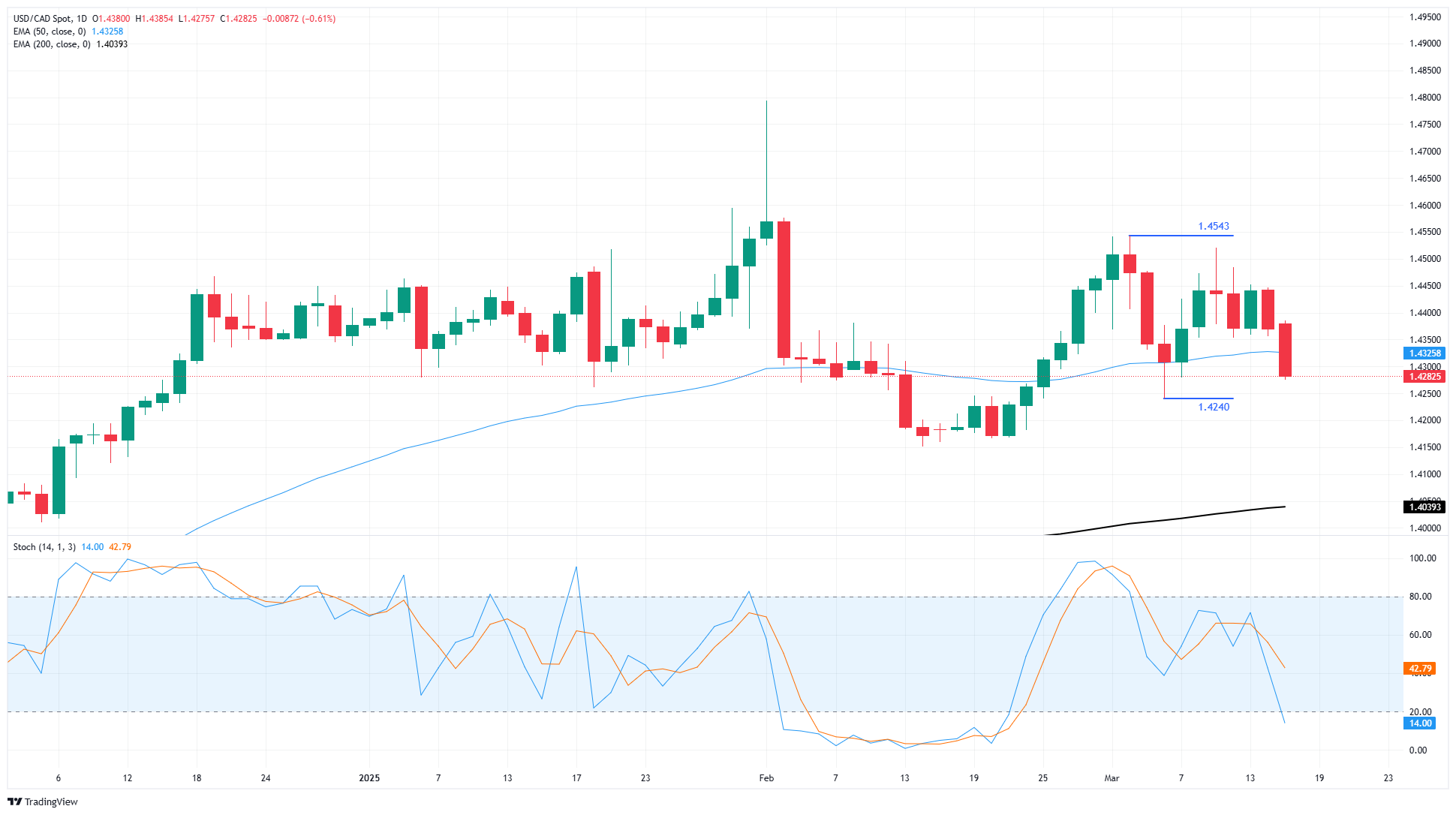- The Canadian dollar rose 0.65% on Monday, supported by barrel offers.
- A general weakening of the US dollar is further helping CAD.
- Canadian inflation data will be published on Tuesday, and are expected to show another increase in inflation.
The Canadian dollar (CAD) rose about two thirds of one percent on Monday, driven by a geopolitical increase in crude oil prices, as well as a general weakening in the dollar offers that helped the CAD to obtain a very necessary impulse.
The prices of crude oil rose to the start of the new negotiation week, with the prices of the barrel of West Texas Intermediate (WTI) reaching the figure of $ 68 per barrel after the US president Donald Trump promised to take measures against the hutis for the increase in hostilities of the group against civil tank ships in the Red Sea. Although shipping routes in the Middle East have little to do with crude oil markets in North America, which are generally contained within industrial supply lines between Canada and the US, a general increase in hostilities that points to shipping routes tends to generate additional fear in raw material markets, raising energy costs.
Canadian consumer price index figures (CPI) are scheduled for Tuesday and are expected to show a general increase in Canadian inflationary pressures. An increase in the key inflation metrics is a bad sign for the Bank of Canada (BOC), which cut the interest rates again last week despite an expected increase in inflation. The Boc is cutting rates to try to increase the affordability in the Canadian housing market, which is in a critical situation. Unfortunately for the president of the BOC, TIFF Macklem, the rate cut of last week, just before another increase in inflation, caused a general increase in Canadian bond markets, against which most Canadian mortgages are set, which caused an increase in the financing costs of housing, instead of a decrease.
What moves the market today: the Canadian dollar rises before the IPC inflation key
- The recovery of the Canadian dollar on Monday pushed USD/CAD below the 1,4300 zone and the 50 -day exponential mobile average (EMA) in 1,4325.
- The Trump administration is preparing for a direct conflict with the hutis in the Red Sea, since the Middle East Group promises to intensify attacks on civil and military ships in key supply lines.
- The annualized inflation of the Canadian CPI is expected to accelerate up to 2.1% year -on -year on Tuesday, compared to the previous 1.9% figure.
- The underlying inflation of the IPC of the BOC remains above the 2.0% target of the Canadian Central Bank, but the markets are struggling to establish a consistent forecast for the figure of Tuesday.
- The markets are preparing for another decision of Federal Reserve (FED) this week, scheduled for Wednesday.
Prognosis of the price of the Canadian dollar
The recovery of the Canadian dollar on Monday has put the CAD on the way to break its consolidation pattern against the US dollar. The USD/CAD has fallen below 1,4300 as the body gains ground, but the next key technical level will be the 1,4200 zone.
Despite the downward thrust in the USD/CAD offers on Monday, the PAR is still firmly trapped in a side channel that has affected the torque since December. The biders of the CAD will need to break both the 1,4100 area and the 200 -day EMA in 1,4040 before a new CAD recovery can be confirmed.
USD/CAD DAILY GRAPH
Canadian dollar faqs
The key factors that determine the contribution of the Canadian dollar (CAD) are the level of interest rates set by the Bank of Canada (BOC), the price of oil, the main export product of Canada, the health of its economy, inflation and commercial balance, which is the difference between the value of Canadian exports and that of its imports. Other factors are market confidence, that is, if investors bet on riskier assets (Risk-on) or seek safe assets (Risk-Off), being the positive risk-on CAD. As its largest commercial partner, the health of the US economy is also a key factor that influences the Canadian dollar.
The Canada Bank (BOC) exerts a significant influence on the Canadian dollar by setting the level of interest rates that banks can provide with each other. This influences the level of interest rates for everyone. The main objective of the BOC is to maintain inflation between 1% and 3% by adjusting interest rates to the loss. Relatively high interest rates are usually positive for CAD. The Bank of Canada can also use quantitative relaxation and hardening to influence credit conditions, being the first refusal for CAD and the second positive for CAD.
The price of oil is a key factor that influences the value of the Canadian dollar. Oil is the largest export in Canada, so the price of oil tends to have an immediate impact on the value of the CAD. Generally, if the price of oil rises, the CAD also rises, since the aggregate demand of the currency increases. The opposite occurs if the price of oil drops. The highest prices of oil also tend to give rise to a greater probability of a positive commercial balance, which also supports the CAD.
Although traditionally it has always been considered that inflation is a negative factor for a currency, since it reduces the value of money, the opposite has actually happened in modern times, with the relaxation of cross -border capital controls. Higher inflation usually leads to central banks to raise interest rates, which attracts more capital of world investors who are looking for a lucrative place to save their money. This increases the demand for the local currency, which in the case of Canada is the Canadian dollar.
The published macroeconomic data measure the health of the economy and can have an impact on the Canadian dollar. Indicators such as GDP, manufacturing and services PMIs, employment and consumer confidence surveys can influence the CAD direction. A strong economy is good for the Canadian dollar. Not only attracts more foreign investment, but it can encourage the Bank of Canada to raise interest rates, which translates into a stronger currency. However, if the economic data is weak, the CAD is likely to fall.
Source: Fx Street
I am Joshua Winder, a senior-level journalist and editor at World Stock Market. I specialize in covering news related to the stock market and economic trends. With more than 8 years of experience in this field, I have become an expert in financial reporting.







